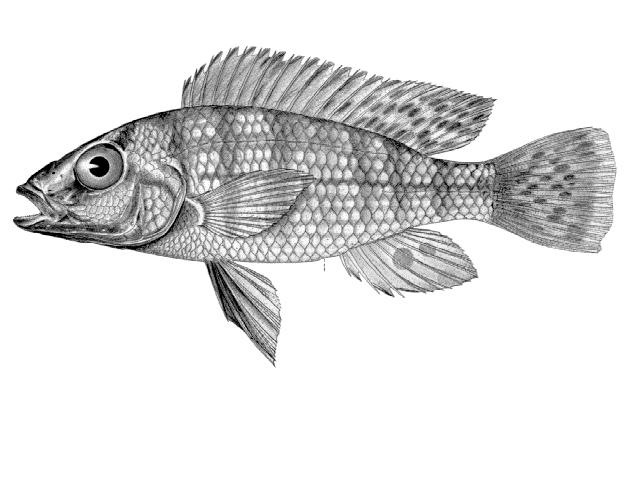| Cichlidae (Cichlids), subfamily: Pseudocrenilabrinae |
| 22 cm TL (male/unsexed) |
|
demersal; freshwater, |
| Africa: Okavango and the upper Save-Runde Rivers, Zambezi River system in Angola, Namibia, Botswana, Zambia and Zimbabwe (Ref. 5596). Also reported from the Kunene in Angola (Ref. 11970). Reported from upper tributaries of the Kasai (middle Congo River basin)(Ref. 11970) questionable and unconfirmed. |
|
Description: moderately deep body; head relatively short; frontal profile steep, straight to slightly concave; caudal fin slightly rounded to subtruncate (Ref. 52307).
Coloration: juveniles and non-breeding adults with greenish-brown body and often 8-10 vertical dark bars; these bars fade, sometimes totally, in courting or territorial males, their bodies more olive, with a yellowish belly and faint purple flush on dorsum and flanks; additionally, throat and breast duskier; rows of rusty brown maculae in dorsal and caudal fins; males with several orange egg spots in anal fin (Ref. 52307). |
| Very adaptive, found in almost every habitat type within its distributional range; feeds mainly on small fish, aquatic insects and crustaceans; females only spawn once a year, around September during the rainy season; spawns of approximately 200 eggs per female are possible; males excavate shallow craters in shallow waters for spawning (Ref. 52307). |
|
Not Evaluated (N.E.) Ref. (130435)
|
| harmless |
Source and more info: www.fishbase.org. For personal, classroom, and other internal use only. Not for publication.

